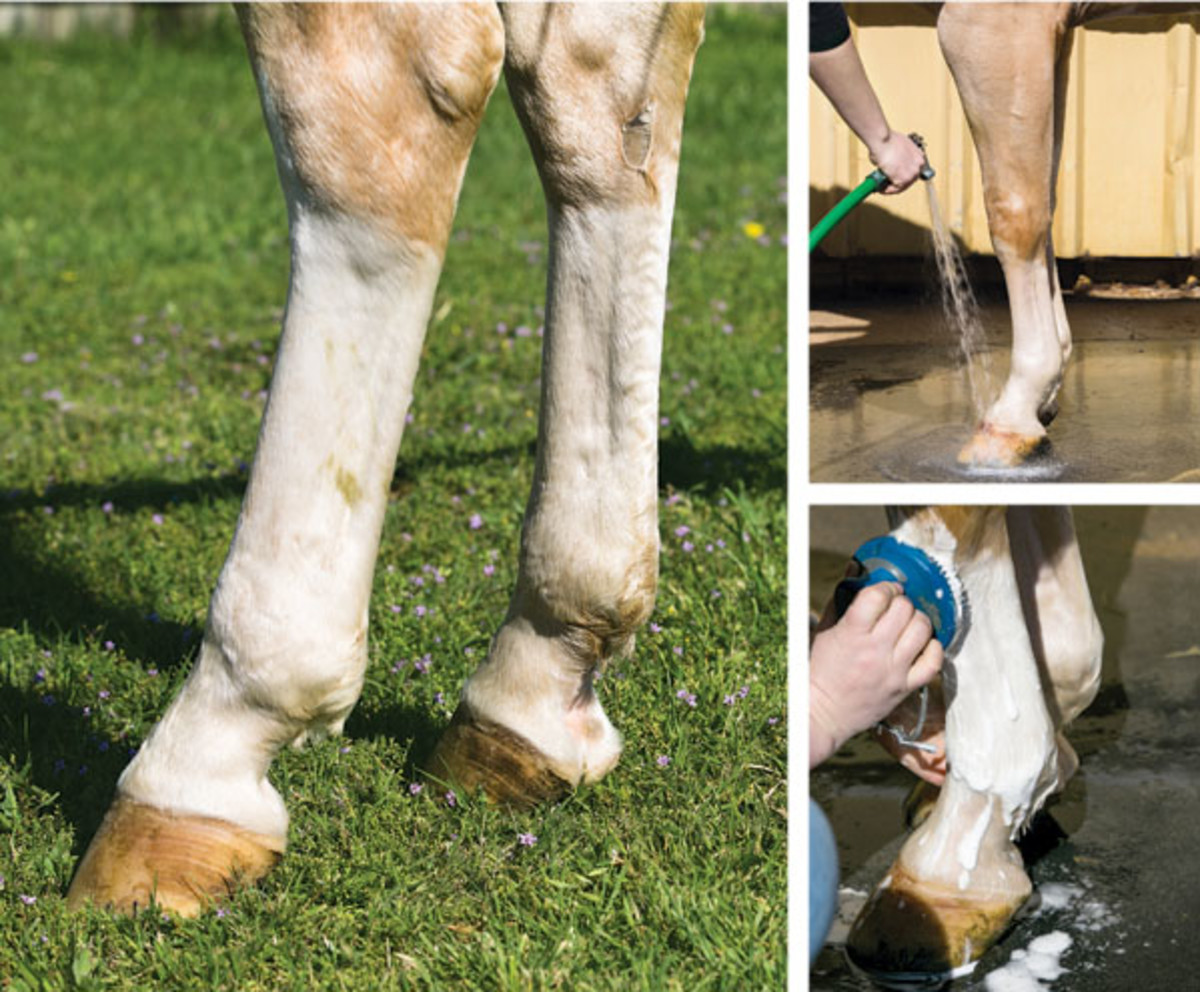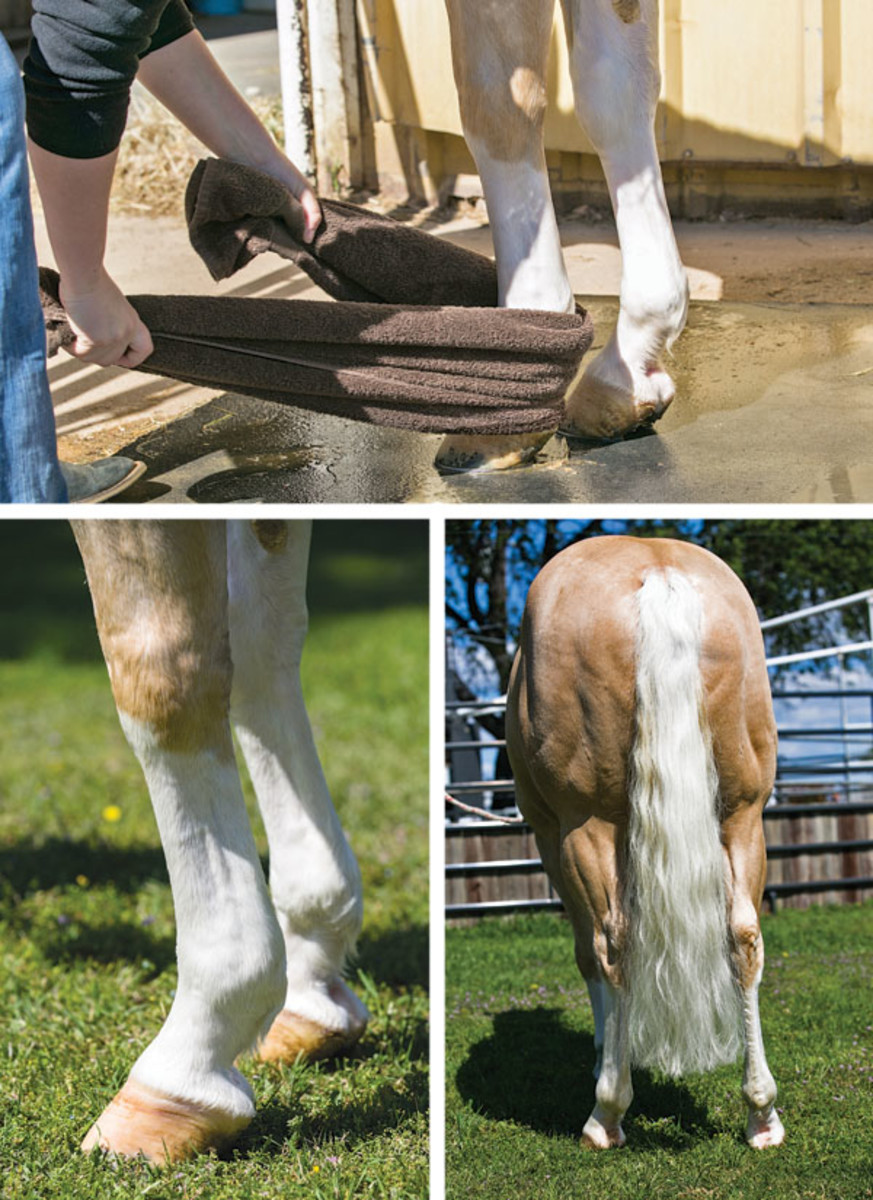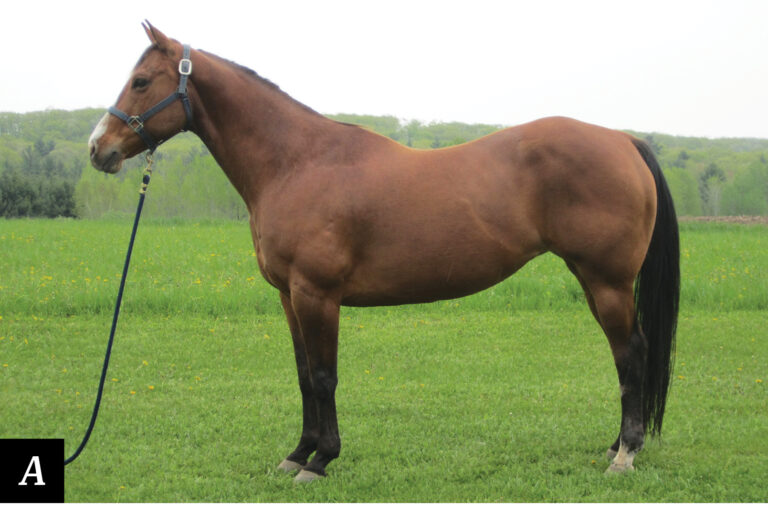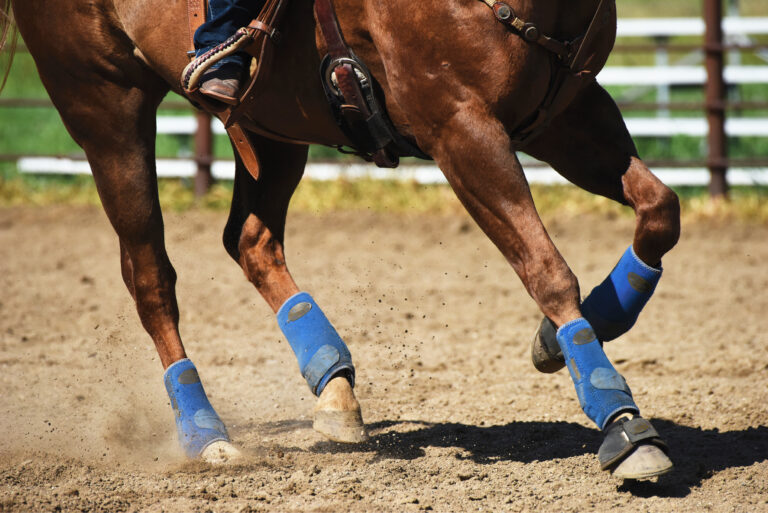Bright-white markings on a good horse help yours stand out from the crowd, but dingy, yellowed manes and tails and stained legs can present an undesirable picture. This is true whether you’re showing, selling, photographing, or just hoping to show off your horse.

There’s no way to prevent your horse from getting stains, but good maintenance can ensure that your horse’s chrome is always gleaming—and reduce the occurrence of painful skin conditions at the same time. Here are seven key ways to keep your horses’ whites sparkling; they’re the same techniques we use at McQuay Stables on horses competing at top levels.
1. Reduce causes for stains. Manure and urine-soaked bedding will stain white points. To reduce the amount of stain-producing material in your horse’s environment, keep stalls and pens clean and fresh by picking them often. Furthermore, you need to remove these kinds of stains from your horse’s coat daily. Infrequent washing or failure to remove dirty spots from manes, tails, and legs can cause semi-permanent dulling of your horse’s white points.

2. Remove stains promptly. Frequent cleaning of white points is the key to keeping stains away. Any time your horse is finished with turnout or exercise and becomes soiled, his white points should be rinsed thoroughly. If rinsing doesn’t remove the soil, wash the points.
Once the stains have occurred on your horse, gentle scrubbing with shampoo and good rinsing helps eliminate them. Be sure to rinse the shampoo completely from your horse’s hair, because residue attracts dirt and will dull the coat.
On white manes and tails, a pre-rinse of household white vinegar can be really helpful in loosening dirt and stains. After wetting the mane and tail, pour vinegar straight from the bottle on the hair and allow it to soak for a few minutes, rinse, then shampoo as usual. You’ll be amazed at the difference you’ll see on your light-colored horse’s tresses.
3. Use gentle products. Use shampoos that are safe, gentle, and formulated for horses. (White vinegar is an exception; you can buy it at any grocery store.)

Avoid using products that have a high alcohol content, promising to keep shavings from sticking to your horse. These types of products can cause tails to become dry and brittle, and that can lead to breakage. We don’t use tail bags, because we want to keep an eye on each horse’s tail while allowing him to enjoy a natural-feeling tail. We’ve also found that tail bags often cause more breakage than leaving tails down.
4. Dry legs thoroughly. It’s important to dry your horse’s pasterns before he’s put away; otherwise, you invite skin issues. Fungal and bacterial skin problems thrive in moist environments, so by eliminating the moisture to the best of your ability, you can avoid such common issues as scratches.
A clean, dry towel works well to absorb moisture around the horse’s legs. We also like to use a canine blow dryer to dry up moisture. (To find one, check with dog-groomer suppliers.) While he’s drying, you may wish to have your horse stand on a clean surface, such as a rubber stall mat. If you dry him in a stall, he’s likely to get sawdust or shavings on his damp skin, and those can hold bacteria.
5. Apply baby powder as needed. If your horse is prone to skin issues, put baby powder on his feet once they’re dry; it helps to absorb any remaining moisture. If you’re showing and need to brighten up clipped white legs, you can do so by rubbing baby powder onto the areas. (Be sure your breed or show association allows this cosmetic enhancement, as some prohibit use of any artificial coloration.)

6. Give that tail a trim. Unless prohibited by your breed or show association, I recommend trimming your horse’s tail to fall at least 4 inches from the ground. By keeping the tail from dragging the ground, you help keep soil out of its ends. The most important benefit of a trimmed tail is to keep the horse from stepping on it. Plus, just as with human hair, removal of split ends is needed periodically.
7. Clip legs judiciously. For easier maintenance, you can clip white legs to remove the longest hair. We clip excess hair from the fetlock on all legs to ease the drying process, and to make it easier to keep the feet clean. Clipping also helps us keep a sharp eye on the horses’ legs, ankles, and fetlocks. I believe it’s important that the legs not be shaved closely, however, as a bit of hair is protective.
Colleen McQuay and her husband, Tim, own McQuay Stables in Tioga, Texas. The couple’s ranch has a breeding operation, a reining horse division, and a hunter-jumper division. Colleen is an accomplished hunter-jumper rider and trainer with United States Equestrian Federation, All American Quarter Horse Congress, and AQHA World Show championships under her belt.
Click here for more grooming tips.




